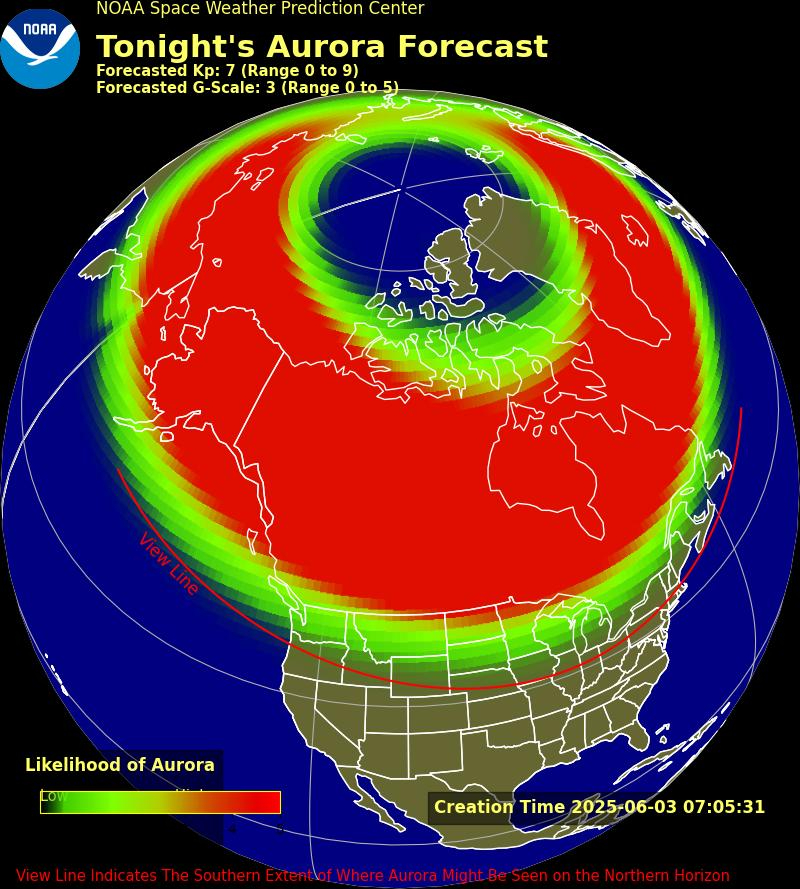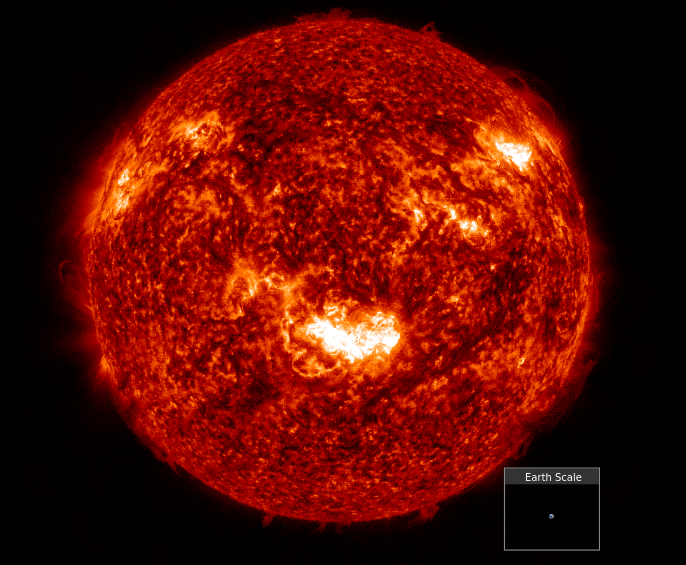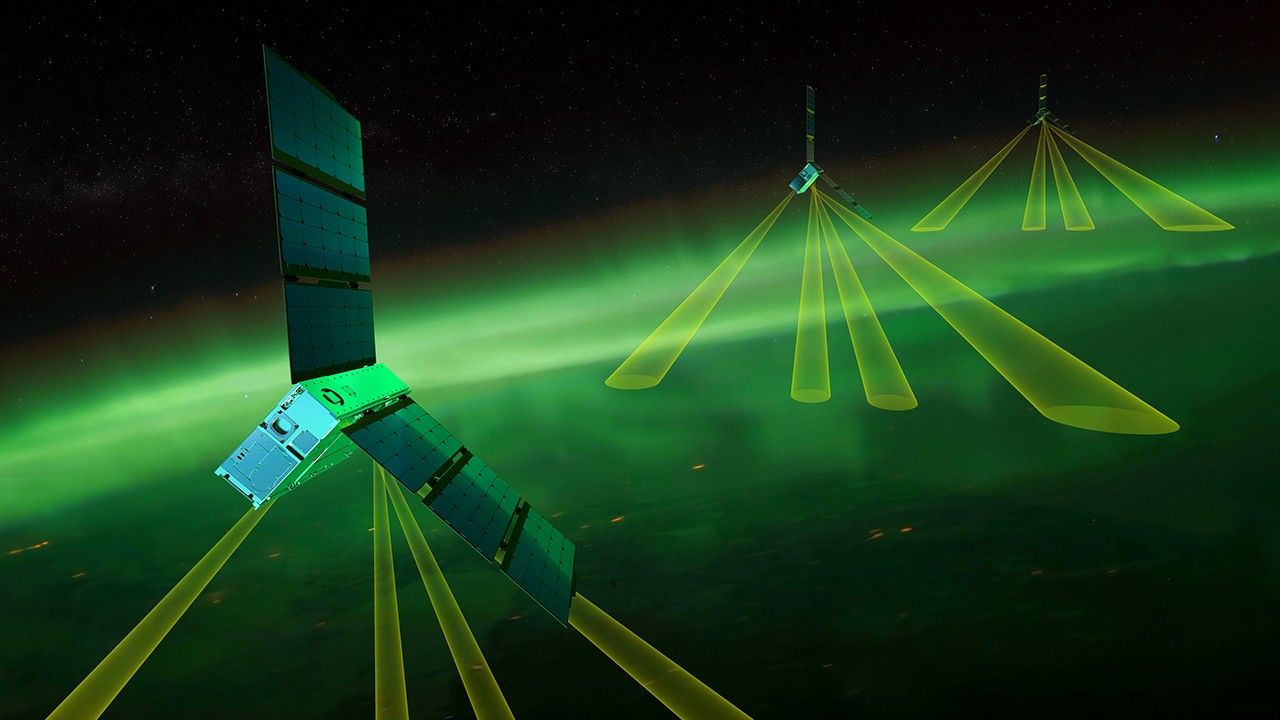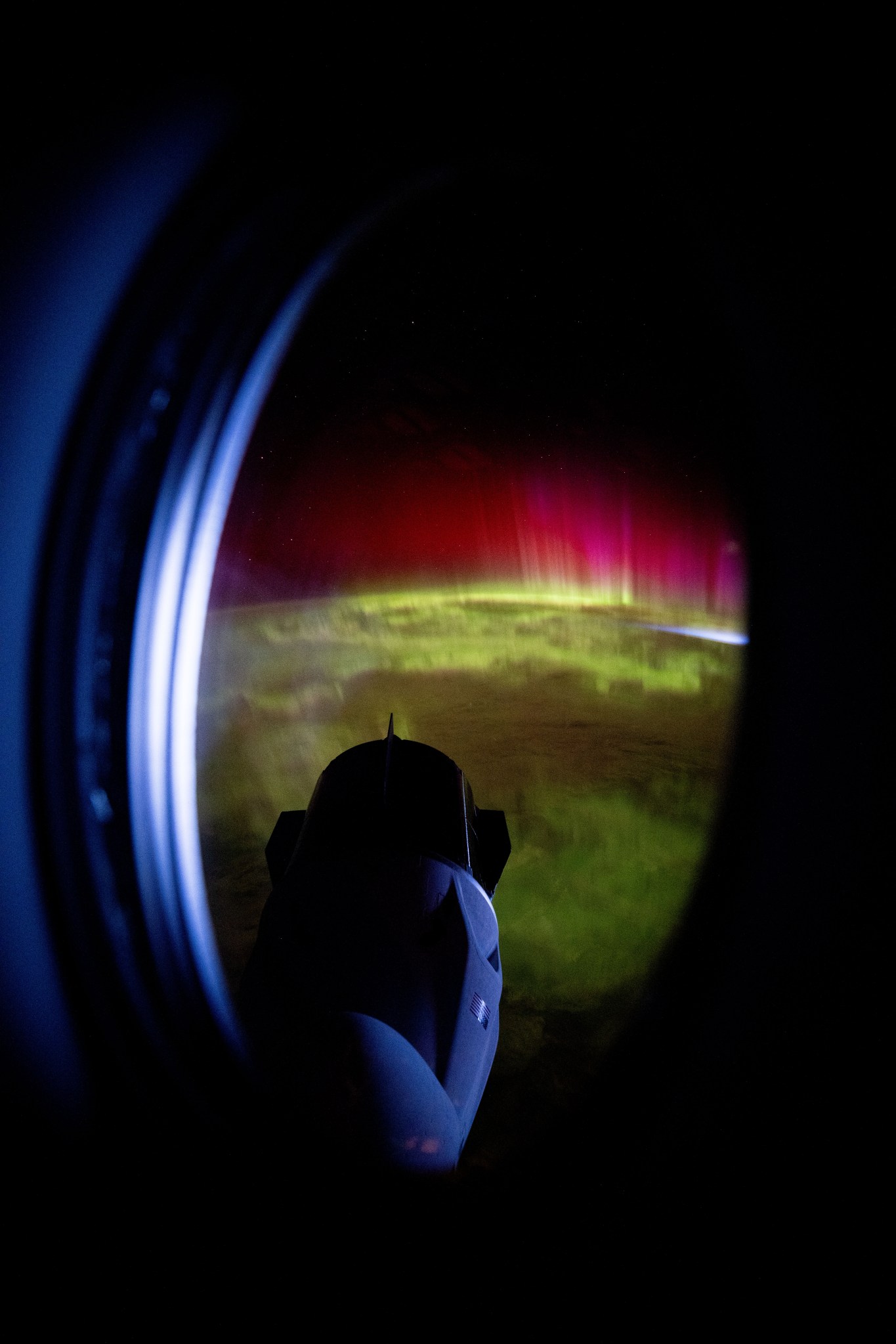Though geomagnetic activity is beginning to wane, the northern lights could still put on a show tonight (June 3). Earth is still reverberating from not one but two coronal mass ejections (CMEs) that hit in the early hours of June 1 and late June 2, wreaking havoc on our magnetic field and triggering incredible auroras around the world. Space weather forecasters from the U.K. Met Office predict there is still a slight chance of further strong (G3) geomagnetic storms, with minor (G1) and moderate (G2) intervals expected. You may like…
Read MoreTag: Auroras
Northern lights may be visible in these 23 US States tonight
Northern lights could put on an impressive show tonight (June 1) as ongoing geomagnetic storm conditions may push auroras farther south than usual, according to the National Oceanic and Atmospheric Administration. Earth is currently reverberating from a speedy coronal mass ejection (CME) impact that struck in the early hours of June 1, wreaking havoc on our planet’s magnetic field — great news for anyone hoping to see the northern lights. Space weather forecasters from the U.K. Met Office predict frequent G1 to G2 level storming and occasional G3 and even…
Read MoreAurora alert: Ongoing powerful geomagnetic storm could spark more northern lights across the US tonight
Good news, aurora chasers — round two could be on the way tonight! If you missed last night’s severe G4 geomagnetic storm last night or just can’t get enough of the northern lights, stay alert: geomagnetic storm conditions are expected to continue, so keep your eyes on the skies and your aurora alerts switched on. Active geomagnetic storm conditions may persist into early June 2, according to NOAA’s Space Weather Prediction Center, as Earth’s magnetic field reverberates from the coronal mass ejection (CME) impact in the early hours of June…
Read MoreEclipses, Auroras, and the Spark of Becoming: NASA Inspires Future Scientists
Explore This Section Science Science Activation Eclipses, Auroras, and the… Overview Learning Resources Science Activation Teams SME Map Opportunities More Science Activation Stories Citizen Science 4 min read Eclipses, Auroras, and the Spark of Becoming: NASA Inspires Future Scientists In the heart of Alaska’s winter, where the night sky stretches endlessly and the aurora dances across the sky in a display of ethereal beauty, nine undergraduate students from across the United States were about to embark on a transformative journey. These students had been active ‘NASA Partner Eclipse Ambassadors’…
Read MoreWhat NASA Is Learning from the Biggest Geomagnetic Storm in 20 Years
6 min read What NASA Is Learning from the Biggest Geomagnetic Storm in 20 Years One year on, NASA scientists are still making huge discoveries about the largest geomagnetic storm to hit Earth in two decades, the Gannon storm. The findings are helping us better understand and prepare for the ways in which the Sun’s activity can affect us. On May 10, 2024, the first G5 or “severe” geomagnetic storm in over two decades hit Earth. The event did not cause any catastrophic damages, but it did produce surprising effects…
Read MoreHow Can I See the Northern Lights? We Asked a NASA Expert: Episode 54
2 min read Preparations for Next Moonwalk Simulations Underway (and Underwater) How can I see the northern lights? To see the northern lights, you need to be in the right place at the right time. Auroras are the result of charged particles and magnetism from the Sun called space weather dancing with the Earth’s magnetic field. And they happen far above the clouds. So you need clear skies, good space weather at your latitude and the higher, more polar you can be, the better. You need a lot of patience…
Read MoreNASA’s EZIE Launches on Mission to Study Earth’s Electrojets
A SpaceX Falcon 9 rocket lifts off from Vandenberg Space Force Base, carrying NASA’s EZIE spacecraft into orbit. SpaceX Under the nighttime California sky, NASA’s EZIE (Electrojet Zeeman Imaging Explorer) mission launched aboard a SpaceX Falcon 9 rocket at 11:43 p.m. PDT on March 14. Taking off from Vandenberg Space Force Base near Santa Barbara, the EZIE mission’s trio of small satellites will fly in a pearls-on-a-string configuration approximately 260 to 370 miles above Earth’s surface to map the auroral electrojets, powerful electric currents that flow through our upper atmosphere in the polar…
Read MoreNASA’s EZIE Launching to Study Magnetic Fingerprints of Earth’s Aurora
5 Min Read NASA’s EZIE Launching to Study Magnetic Fingerprints of Earth’s Aurora High above Earth’s poles, intense electrical currents called electrojets flow through the upper atmosphere when auroras glow in the sky. These auroral electrojets push about a million amps of electrical charge around the poles every second. They can create some of the largest magnetic disturbances on the ground, and rapid changes in the currents can lead to effects such as power outages. In March, NASA plans to launch its EZIE (Electrojet Zeeman Imaging Explorer) mission to learn…
Read MoreEclipses to Auroras: Eclipse Ambassadors Experience Winter Field School in Alaska
Explore This Section Science Science Activation Eclipses to Auroras: Eclipse… Overview Learning Resources Science Activation Teams SME Map Opportunities More Science Activation Stories Citizen Science 3 min read Eclipses to Auroras: Eclipse Ambassadors Experience Winter Field School in Alaska In 2023 and 2024, two eclipses crossed the United States, and the NASA Science Activation program’s Eclipse Ambassadors Off the Path project invited undergraduate students and amateur astronomers to join them as “NASA Partner Eclipse Ambassadors”. This opportunity to partner with NASA, provide solar viewing glasses, and share eclipse knowledge…
Read MoreRed and Green Aurora Move Through Earth’s Atmosphere
Peering through the window of the SpaceX Dragon Endeavour spacecraft, NASA astronaut Matthew Dominick captured this image on Oct. 7, 2024 of the SpaceX Dragon Freedom spacecraft as vivid green and pink aurora swirled through Earth’s atmosphere while the International Space Station soared 273 miles above the Indian Ocean. Visit Dominick’s photography on station to experience the wonders of space through his eyes, enriched by his remarkable journey of orbiting the Earth 3,760 times. To see a short-term forecast of the location and intensity of the next aurora check this…
Read More








